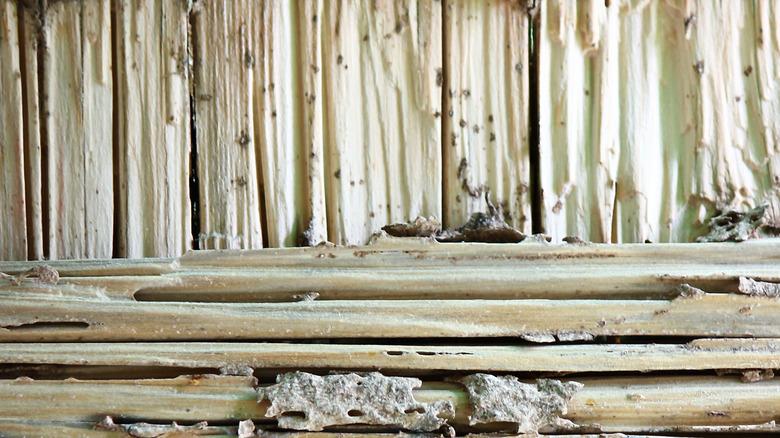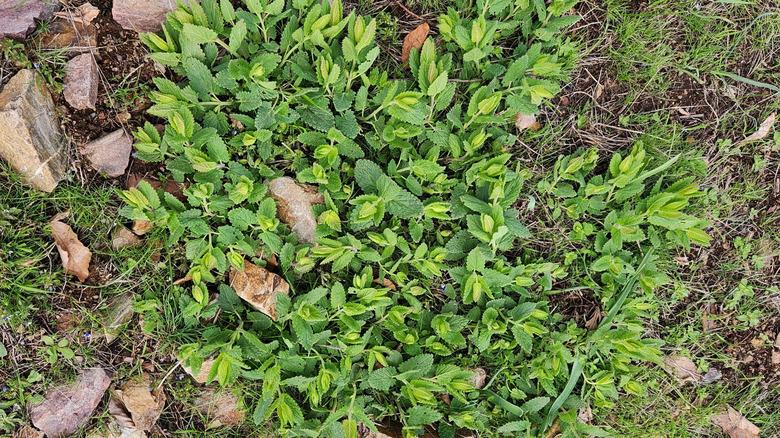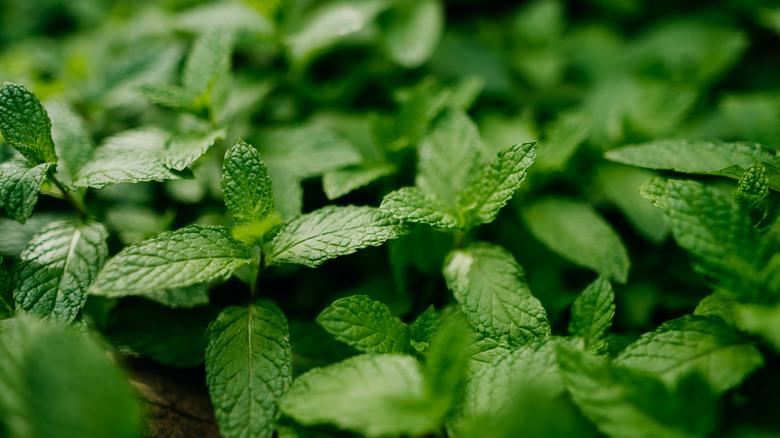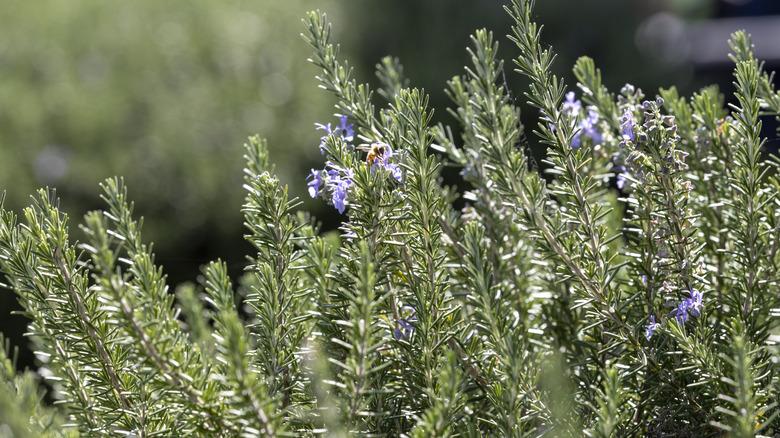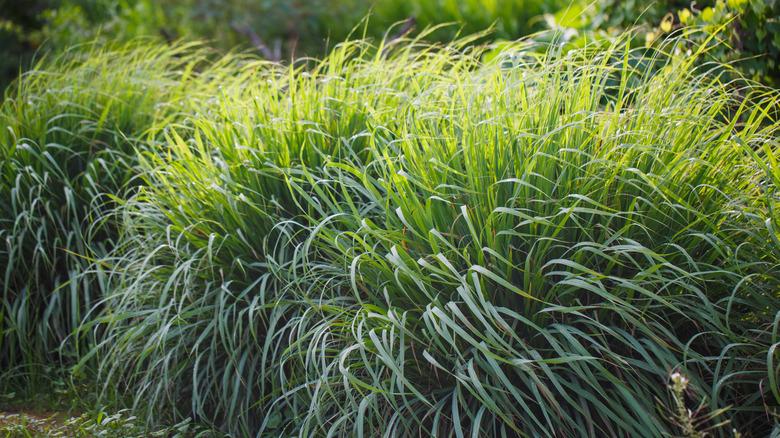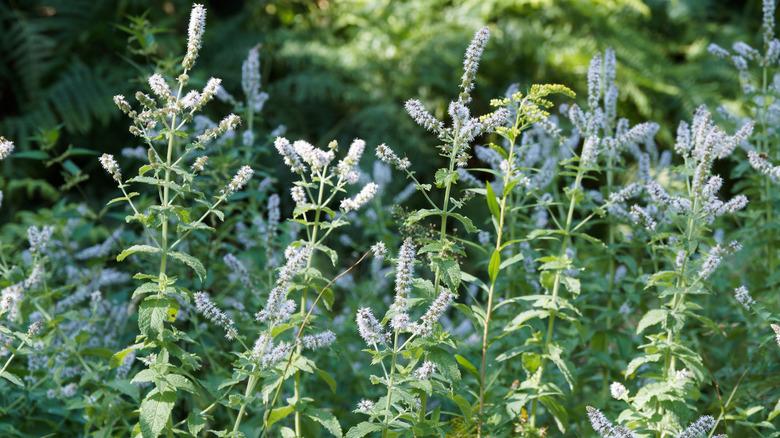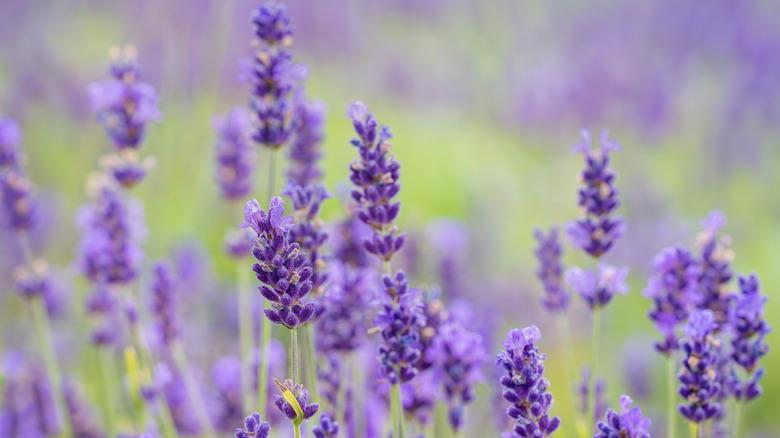8 Beautiful Plants That Double As Natural Termite-Repellents
Yikes! Termites! It's hard to think nice thoughts about these pests, even if they serve an important purpose in the wild. Someone has to break down all that wood and turn it into fertile soil. But termites in the wrong place can do a lot of damage, which is why keeping them out of your home and garden is an important task. These little insects can be quietly destructive, undermining a wooden structure long before you notice. If you neglect the fact that you have termites, it won't be too long before your home starts to collapse.
Fortunately, termites are smart and they learn from their mistakes. Not only are they repelled by certain smells; they learn to avoid the area. There are ample chemicals that can be used to kill termites, but it's better to deter them from your home in the first place. Planting a variety of garden favorites — a beautiful mix of herbs and ornamental flowers — can teach termites to go where they are useful and stay away from where they're not wanted. In the end, you've got a garden full of delightful flowers and herbs without the worry that your wooden structures are being eaten away.
Vetiver
Vetiver (Chrysopogon zizanioides) is an Asian bunchgrass similar to lemongrass. It contains the important essential oil nootkatone, the citrus-y flavor most identified with grapefruit. Nootkatone is a powerful, EPA-registered repellent whose strong odor disrupts termites' sense of smell. Nooktatone is found in the plant's roots where termites burrow, driving them away. Vetiver is hardy only in USDA hardiness zones 8 through 10, so you'll most likely want to grow it as an annual. With its proven effectiveness against termites, you won't mind replanting it every year.
Catnip
Catnip (Nepeta cataria) contains the essential oil nepetalactone, the scent that attracts cats and also has been demonstrated to be an effective termite repellent. The chemical disrupts insect nervous systems, and thus will disorient and deter the termites. Catnip is a perennial hardy in zones 3 to 9. Plant it in full sun to part shade. Just be aware that some cats actually find it distasteful and develop gastrointestinal problems.
Spearmint
Spearmint (Mentha spicata) contains a number of essential oils, most notably carvone, which has been shown to repel termites. The downside of using spearmint to repel termites, however, is that it is not as effective as some other plants. However, it has the added benefit of giving off a smell that is very pleasant. Spearmint is hardy in zones 5 to 9 and grows best in full sun or part shade.
Clary sage
Clary sage (Salvia sclarea) is a beautiful and easy-growing biennial or short-lived perennial hardy in zones 5 to 9. It contains linalyl acetate, a powerful essential oil that functions as a very effective termite deterrent. Plant clary sage in full sun in a well-draining soil rich in organic matter but don't over-fertilize. The spiky flowers of clary sage will attract pollinators, while its leaves are edible though bitter.
Rosemary
Also in the sage family is rosemary (Salvia rosmarinus), which was found to be equally effective against termites to clary sage. It's relatively easy to grow rosemary. While it's hardy only in zones 8 to 10, you can either grow it as an annual or move it indoors over the winter. Don't over-water it, however, especially over the winter, as it's a Mediterranean plant used to short periods of drought. Grow it in full sun in well-draining soil rich in organic matter.
Lemongrass
In a study published by International Biodeterioration & Biodegradation, lemongrass (Cymbopogon citratus) was second only to mint in its effectiveness against termites. Lemongrass's major compound is citral, a natural repellent to underground termites. For most people, you'll have to grow lemongrass as an annual, as it is hardy only in zones 9 to 11. It requires full sun and moist, well-draining soil. While lemongrass is generally safe for cats and dogs in small amounts, it can cause stomach upset if eaten in large amounts.
Wild mint
Wild mint (Mentha arvensis) is native to North America. Its oil produced 100% mortality in termites according to a study in International Biodeterioration & Biodegradation. Plus, it had a scent that is pleasant to most people. Wild mint attracts butterflies and other pollinators. Like spearmint, it's best to keep this fast spreader in pots. Wild mint is hardy in zones 3 to 8. Plant it in full sun for best flowering.
Lavender
The linalool and other essential oils in lavender (Lavandula angustifolia) are potent termite repellents, while the flowers will attract pollinators and delight humans with their scent and display. Hardy in zones 5 to 9, lavender is another Mediterranean plant that shouldn't be over-watered. Plant it in full sun to part shade in soil with good drainage and plan on using its dried flowers for teas and potpourri.
